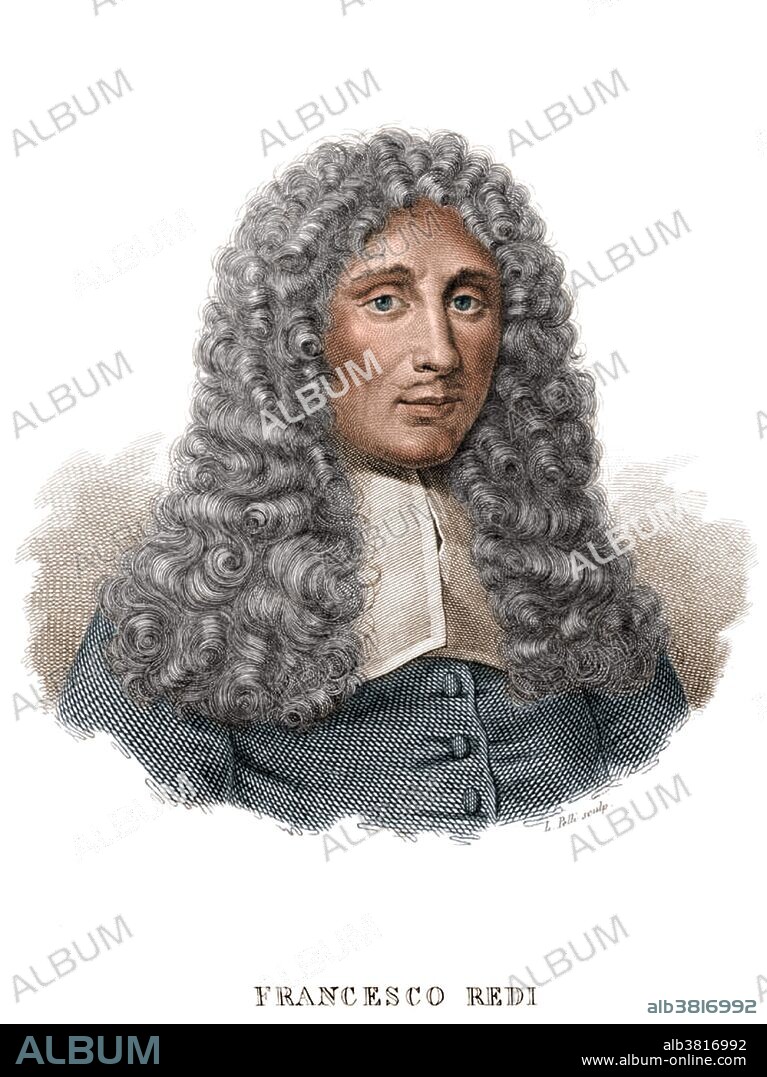alb3816992
Francesco Redi, Italian Naturalist

|
Add to another lightbox |
|
Add to another lightbox |



Title:
Francesco Redi, Italian Naturalist
Caption:
Francesco Redi (February 18, 1626 - March 1, 1697) was an Italian physician and naturalist. He is known for his series of experiments, published in 1668 as Esperienze Intorno alla Generazione degl'Insetti (Experiments on the Generation of Insects) which disproved the theory that maggots could be spontaneously generated from meat using a controlled experiment. Spontaneous generation, the theory that life forms can be generated from inanimate objects, had been around since at least the time of Aristotle. He took six jars, which he divided in two groups of three: in the first jar of each group, he put an unknown object; in the second, a dead fish; in the last, a raw chunk of veal. He took the first group and covered the tops with fine gauze. He left the other group of jars open. After several days, he saw maggots appear on the objects in the open jars, but not in the gauze covered jars. In his second experiment, meat was kept in three jars. One of the jars was uncovered, and two of the jars were covered, one with cork and the other one with gauze. Flies could only enter the uncovered jar. In the gauze covered jar, maggots appeared, but did not survive. In another experiment he discovered that when dead flies or maggots were put in sealed jars with dead animals or veal, no maggots appeared, but when the same thing was done with living flies, maggots did.
Credit:
Album / Science Source
Releases:
Model: No - Property: No
Rights questions?
Rights questions?
Image size:
3300 x 4403 px | 41.6 MB
Print size:
27.9 x 37.3 cm | 11.0 x 14.7 in (300 dpi)
Keywords:
17TH CENTURY • ARISTOTELIAN ABIOGENESIS • ART • ARTWORK • CELEBRITIES • CELEBRITY • COLOR • COLORIZED • CONTROLLED EXPERIMENT • DISPROVED SPONTANEOUS GENERATION • DRAWING • ENHANCE • ENHANCEMENT • EUROPEA • EUROPEAN • FAMOUS • FIGURE • FRANCESCO REDI • HISTORIC • HISTORICAL DOCTOR • HISTORICAL PHYSICIAN • HISTORICAL • HISTORY • ILLUSTRATION • ILLUSTRATIONS • IMPORTANT • ITALIAN • MAGGOT EXPERIMENT • MALE • MAN • MEN • NATURALIST • NOTABLE • PEOPLE • PERSON • PERSONALITIES • PERSONALITY • PORTRAIT • POTRAIT • REDÓ • SCIENCE • WELL-KNOWN
 Pinterest
Pinterest Twitter
Twitter Facebook
Facebook Copy link
Copy link Email
Email

